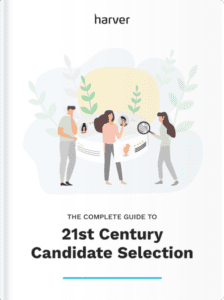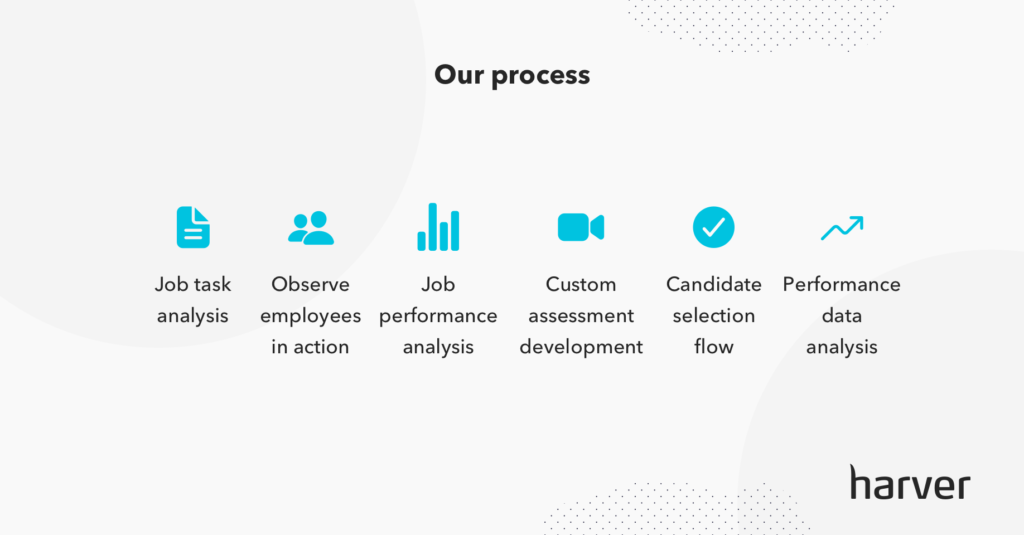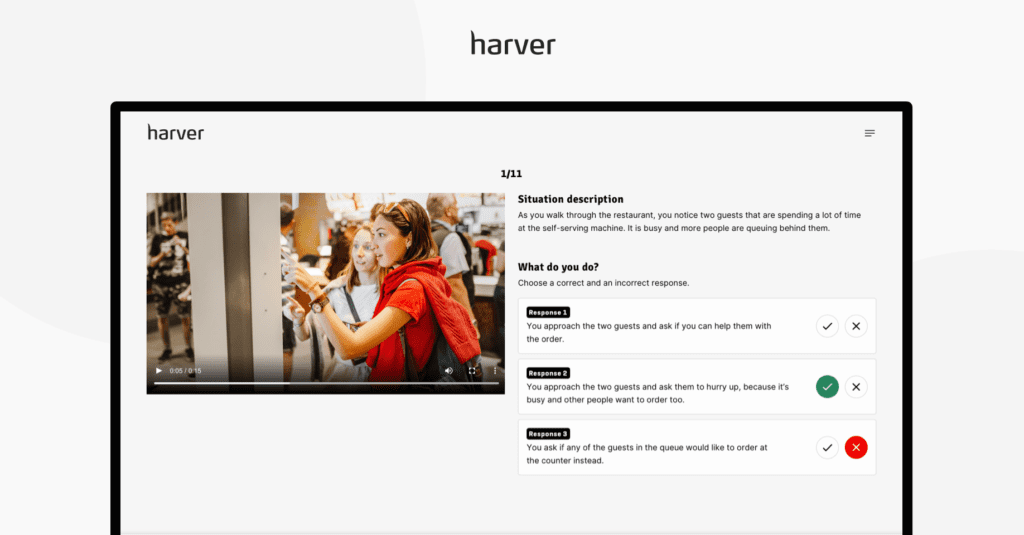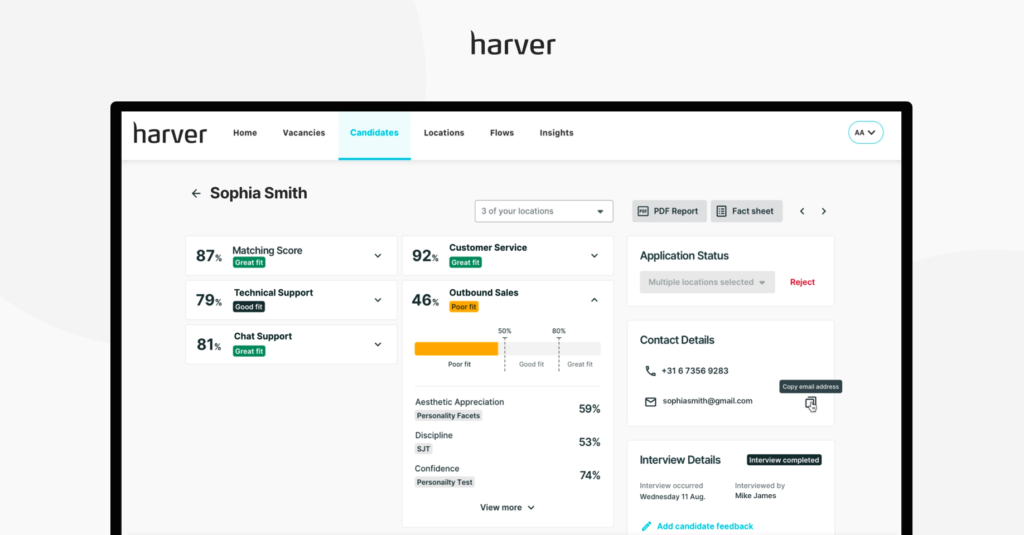When hiring for entry-level roles, selecting candidates based on their past experience can lead to poor quality hires and early attrition, due to misaligned expectations and a poor job fit. We see it in retail, contact centers, hospitality, warehousing.
Yet, companies continue to make resume-based decisions when hiring for low-complexity jobs. This happens despite the fact that 80% of firms report that the current talent shortage has hurt their business, and 41% of companies say that entry-level vacancies are the toughest to fill.
The solution is to (re)focus your hiring strategy on skills acquisition and redesign your recruitment process to attract and select candidates with the proper skills and characteristics for your open roles.
This implies looking at both your current candidate journey and the tech stack that you’re using, to understand why you’re not attracting the right talent, and where the bottlenecks are in the selection process.
So let’s start with the selection criteria for attracting and selecting better quality candidates for entry-level roles.
What’s in?
Like what you see?
Don’t miss out. Subscribe to our quarterly digest to get the latest TA and TM resources delivered right to your inbox.
Why hiring for skills is the way to go
While many recruiters have long-emphasized and looked for past experience, in entry-level roles, this isn’t a surefire indicator of potential success. In fact, a 2019 study by Harvard Business Review found no significant link between a new hire’s past experience and their success at their new firm.
Our experience in the volume hiring space shows the same: that for entry-level, low-complexity roles, skills and characteristics are more important than one’s resume.
Thus, recruiters should select candidates based on their skills, cultural fit, and how well they complement the job’s schedule and geographical location. All these criteria can be checked during the screening process, using a combination of pre-employment assessments. This ensures a data-driven approach to hiring and contributes to a higher quality of hire in the long run.
That said, it’s worth noting that the right hiring criteria varies depending on which industry and role you’re hiring for.
Stop guessing,
Start data-driven hiring.
Learn how you implement a modern candidate selection process, that is: streamlined, experience-driven and backed by data.

The process of choosing candidate selection criteria
While we recognize it’s essential that hiring criteria is tailored to the industry in question, the process by which we arrive at the skills and characteristics that a company should look for in their candidates is the same across the board.
At Harver, we follow a specific framework to ensure a thorough understanding of your company culture and job profiles, so that we can recommend and design the most relevant skill assessments for your open vacancies. Here’s what this process looks like, in big lines.

Step 1: Job task analysis
We start with a job task analysis, to define the company values and culture, identify the larger work responsibilities for each specific role and then dig down into each one to a more granular level, to understand what core competencies are needed for each role.
The goal of this first step is to evaluate the jobs themselves, so we’re not trying to draft a profile of the ideal candidate yet. To identify the core competencies of the role, we conduct observations of the job, interview subject matter experts and employees, and look at work diaries and job descriptions.
Our approach is collaborative: we engage with your teams in a series of workshops to help us understand your organization and the roles you’re hiring for, as well as what a top-performing employee looks like to you. At the end of this step, we start formulating a hypothesis regarding the ‘must-have’ skills candidates need to succeed in entry-level jobs in your company.
Step 2: Observe employees in action
This stage is crucial for fully understanding the exact skills and competencies needed for candidates to do the job justice. And what better way to appreciate how a role works than to actually observe it in action?
That’s why our team of Industrial and Organisational (I/O) psychologists shadow your employees that are already working the relevant. More specifically, they observe what happens in a typical day and how long it takes to complete particular tasks. These kinds of situations will then be included in custom-made situational judgment tests (SJTs).

Step 3: Job performance analysis
Moving on, our People Science team then looks at the role’s specific goals, performance indicators, and existing processes to understand the criteria by which an employee’s success is measured. We also assess the personality facets that are predictive of success in any given role.
The purpose of this stage is to identify precisely what knowledge, expertise, and skills are needed to perform all the relevant aspects of the job you’re hiring for. In other words, again, the focus here is not on an individual candidate’s resume but on the skills a person needs to perform the specific job you’re hiring for.
This data is later used in the candidate selection process for establishing certain score ranges as benchmarks to compare against the scores of applicants. This ensures you’re hiring people who have the same skills and characteristics as your top performers, so your candidate selection process becomes data-driven and objective.
Below you can see, for example, a candidate profile page with scores from different types of assessments.

Step 4: Custom assessment development
Once we’ve collated all the information we need from steps one to three, we can develop customized pre-employment assessments. Once we have a draft, we’ll test them on a small cohort of your employees. This will comprise a mixture of your best and worst-performing workers to provide an accurate representation of your entire workforce.
Then, we can analyze specific assessment items and scores that correlate with critical metrics and KPIs. In short, this will provide the data we need to validate the right benchmarks and skillsets when hiring for entry-level jobs. We’ll also verify these pre-employment assessments with your hiring managers before moving forward.
At the end of this process, we select the final SJTs to include in your recruitment flow for the roles in scope.
This approach empowers hiring managers to gauge whether a candidate’s response to the situation fits the necessary skills and competencies needed for the particular role.
Not only that, but because candidates get a ‘sneak peek’ into the kinds of situations they’ll face at work, they get a better insight into whether the role is a good fit for them. If it’s not, applicants tend to withdraw their candidacy at this stage, which, although it may seem like a pain – your staff retention rates will benefit in the long run.
Once this step is completed, we’re in a position to proceed with SJT filming and production. The purpose of this is to bring the candidate experience to life.
If you’d like to explore this topic further, you can book a demo with our team below.
Ready to transform your hiring process?
Step 5: The “hygiene skills”
In certain situations, we also work with clients to assess specific “hygiene skills” needed to perform core tasks. For example, for entry-level positions in contact centers and BPOs, we factor in computer literacy, as well as verbal and written communication skills into the hiring process.
Step 6: Final assessments and selection flow
Now you’re ready to evaluate the effectiveness of your pre-employment assessments. At this point, we’ll work with your team to build the specific candidate selection flows needed for each of the open roles.
By knowing precisely what you’re looking for in your entry-level candidates, you can decide upon the best employee selection methods to use in your hiring process. Although it’s rare to redo assessments, we sometimes adjust hiring assessments after they launch.
This is more likely to occur if the job market is exceptionally competitive and a business wants to shorten its hiring assessment process to prevent high candidate drop-off rates. In situations like this, candidates are more likely to skip applying for entry-level roles with too lengthy assessments.
Next steps
To conclude, when you hire for low-complexity, entry-level roles, the emphasis shouldn’t rest on resumes and past experience. Instead, the focus needs to be on the job itself and the skills necessary to do it well.
This means that instead of using out-of-the-box solutions, you should design a candidate selection flow that includes the specific assessments that’ll help you find the applicants that best fit your roles and company culture.


